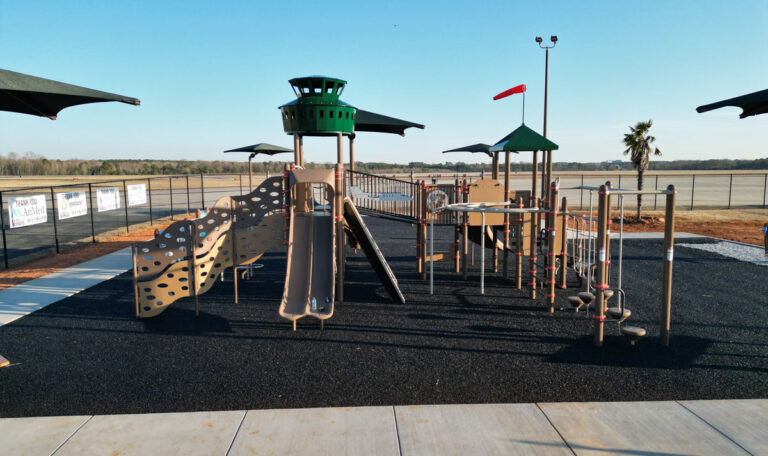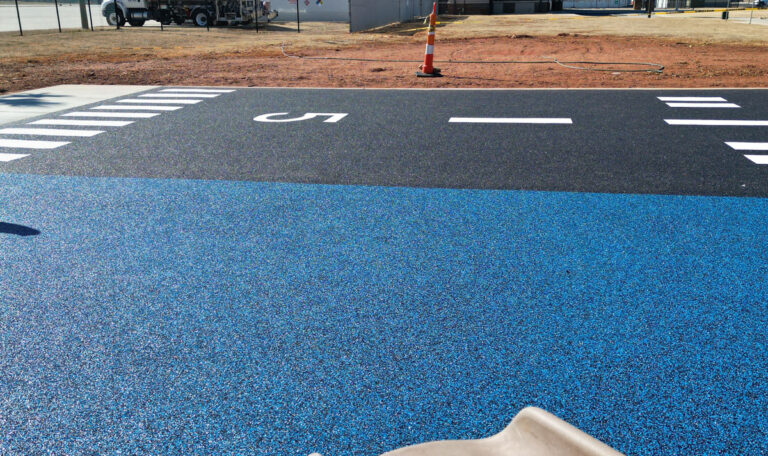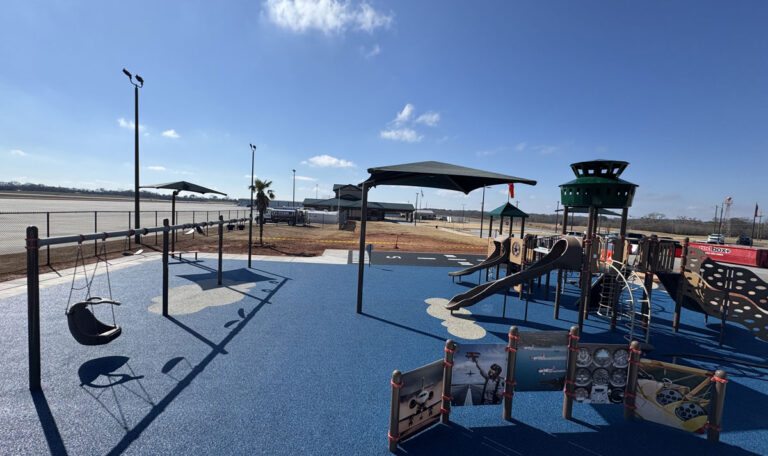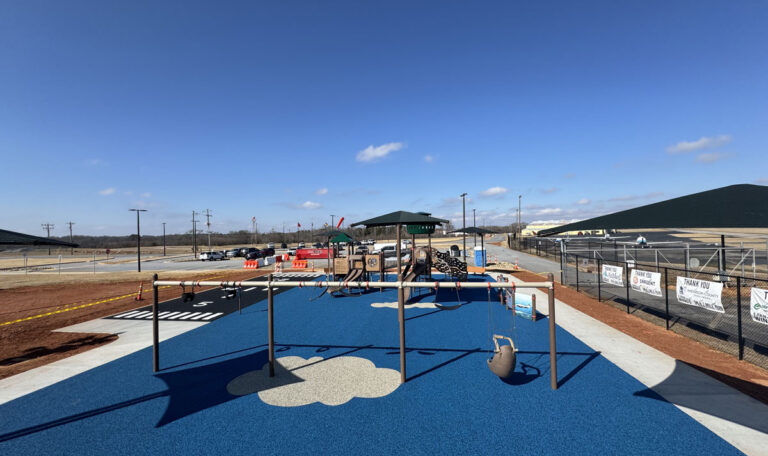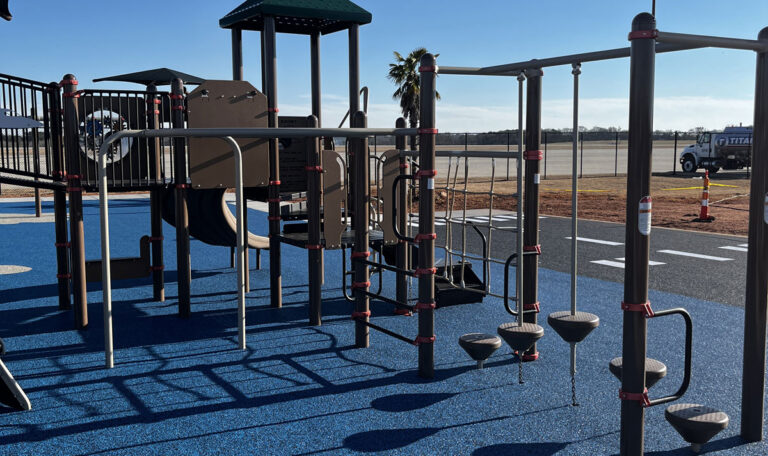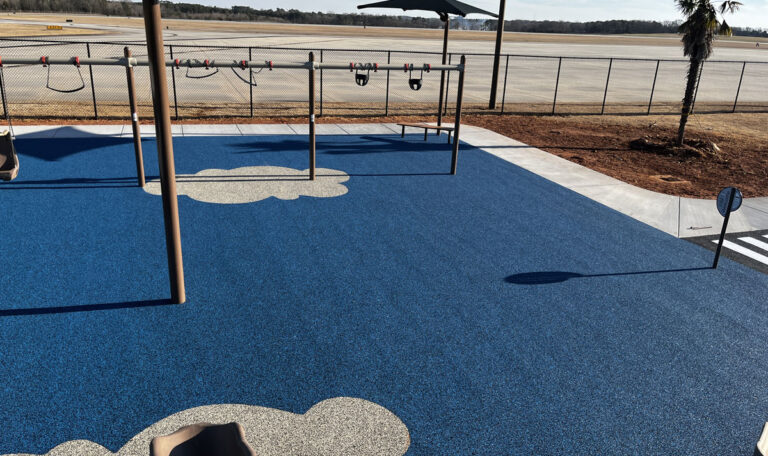Why Wetpour Soft Surfaces Are Revolutionizing Playground Safety
Wetpour soft surfaces are seamless, impact-absorbing rubber surfaces designed for playgrounds and recreational areas that combine safety, durability, and aesthetic appeal. These specialized surfaces have become increasingly popular for good reason:
| Key Benefits of Wetpour Soft Surfaces |
|---|
| ✓ Impact absorption reducing injury risk |
| ✓ Meets BS EN 1177 safety standards |
| ✓ Lifespan of 10-15 years when properly maintained |
| ✓ Available in 30+ colors with custom design options |
| ✓ Porous system preventing water pooling |
| ✓ Made from recycled rubber, environmentally friendly |
When you step onto a playground with wetpour surfacing, you’re experiencing a carefully engineered safety system. Unlike traditional materials like concrete, tarmac, or loose wood chips, wetpour creates a continuous, joint-free surface specifically designed to cushion falls and reduce injuries.
The beauty of wetpour soft surfaces goes beyond safety. These surfaces can transform ordinary play areas into vibrant, engaging spaces through an array of colors and custom designs. From educational graphics to imaginative landscapes, the design possibilities are nearly limitless.
As a facility manager, you’re likely concerned with both safety compliance and maintenance costs. Wetpour addresses both concerns through its durable construction and adherence to rigorous safety standards. The two-layer system—typically consisting of a shock-absorbing SBR (Styrene Butadiene Rubber) base layer and a colored EPDM (Ethylene Propylene Diene Monomer) top layer—can be precisely engineered to meet specific critical fall height requirements.
I’m Landon Olson, and with over 8 years of experience in the safety surfacing industry, I’ve helped countless facilities implement wetpour soft surfaces that transform environmental challenges into sustainable, safe recreational spaces at Replay Surfacing Inc.
Quick wetpour soft surfaces terms:
– rubber wetpour diy
– wetpour rubber surfacing
– soft fall rubber mats
Understanding Wetpour Soft Surfaces
Ever watched children playing on a colorful, bouncy playground surface and wondered what makes it so special? Let’s explore wetpour soft surfaces – the unsung heroes of playground safety that are changing how we think about outdoor play spaces.
What Are Wetpour Soft Surfaces?
Wetpour soft surfaces are exactly what they sound like – rubber surfacing that’s poured wet on-site to create a seamless, continuous playground surface. Unlike traditional playground materials with gaps, seams, or loose parts that can shift around, wetpour creates one unified surface that children can play on safely.
Think of it as a safety blanket for playgrounds. When little ones take those inevitable tumbles (because let’s face it, kids and falls go together like peanut butter and jelly), wetpour soft surfaces are there to cushion the impact.
What makes these surfaces truly stand out is their commitment to safety standards. In the UK, they’re rigorously tested to BS EN 1177 standards, while in the US, they meet ASTM F1292 requirements for impact absorption. This isn’t just about comfort – it’s about preventing serious injuries.
As one playground safety expert perfectly put it: “When children play, falls are inevitable. What matters is what they fall onto.”
How Wetpour Soft Surfaces Are Made
The magic of wetpour soft surfaces happens in layers – kind of like a safety sandwich:
The bottom layer is the workhorse – made from SBR (Styrene Butadiene Rubber) granules, often recycled from old vehicle tires. This layer does the heavy lifting when it comes to shock absorption. Its thickness varies depending on how high the playground equipment is – taller equipment needs thicker surfacing to protect against falls.
The top layer is the pretty face – made from EPDM (Ethylene Propylene Diene Monomer) rubber granules. This virgin rubber is specially engineered to stand up to harsh UV rays and daily wear and tear. It’s typically 15-20mm thick and comes in over 30 vibrant colors that won’t fade easily.
Both layers get mixed with polyurethane binder – the glue that holds everything together while maintaining flexibility.
The installation process is fascinating to watch. Trained technicians prepare the ground, mix the rubber with binder on-site, pour it over the prepared area, and hand-trowel it to perfection. After curing, you’re left with a surface that’s both beautiful and protective.
According to the Wet Pour Surfacing Advice from safety organizations, proper installation isn’t just recommended – it’s essential for ensuring the surface will perform as expected throughout its lifetime.
At Replay Surfacing, we’ve perfected this process, changing thousands of old tires into safe, colorful play spaces that protect children while giving rubber waste a second life. The result? Playgrounds that parents trust, children love, and our planet appreciates.
Advantages of Wetpour Soft Surfaces
When parents watch their children run and play, safety is always top of mind. That’s why wetpour soft surfaces have become the gold standard for modern playgrounds. These surfaces offer so much more than just a place for kids to land when they jump or fall – they provide peace of mind for caregivers and a world of creative possibilities for designers.
Safety Benefits of Wetpour Soft Surfaces
Let’s face it – kids fall. It’s part of growing up. But where they fall makes all the difference in the world.
Wetpour soft surfaces excel at cushioning these inevitable tumbles thanks to their clever dual-layer design. The SBR base layer works like a built-in safety net, absorbing impact energy that might otherwise result in serious injuries. This is especially crucial around higher equipment where falls can be more dangerous.
Every wetpour soft surface we install is carefully engineered to meet specific critical fall height requirements. What does that mean? Simply put, we calculate exactly how thick the protective base layer needs to be based on how high your playground equipment is. The higher the equipment, the thicker the base layer – it’s safety science in action!
These surfaces don’t just meet safety standards – they accept them. Compliance with BS EN 1177 in the UK and ASTM F1292 in the US isn’t just a checkbox for us; it’s our commitment to keeping children safe.
Even on rainy days, wetpour soft surfaces maintain their grip. The naturally textured surface provides excellent slip resistance when wet, unlike other materials that can become treacherous after a shower. And without seams or edges to trip over, these seamless surfaces are particularly wonderful for inclusive playgrounds where children with mobility challenges can play freely.
A school principal from Charlotte recently told us: “After installing wetpour soft surfaces in our playground, we’ve seen a significant reduction in playground injuries. Parents have greater peace of mind, and children can play more freely.” That’s exactly what we love to hear!
Design and Customization Options
Here’s where playground planning gets really fun! Wetpour soft surfaces are like a blank canvas waiting for your creativity.
With over 30 standard EPDM colors available, from vibrant primary hues that pop to subtle earth tones that blend with natural surroundings, the color possibilities are vast. We can use single colors for a clean look or blend multiple colors for something truly unique.
The real magic happens when we incorporate designs directly into the surface. Imagine numbers and letters that turn playtime into learning time, or hopscotch patterns and mazes that add games without additional equipment. We’ve created maps of the United States where children can literally hop from state to state, and vibrant underwater scenes complete with dolphins and fish.
Because wetpour soft surfaces are poured in place (hence the name!), we can create any shape you can dream up. Curved edges, flowing designs, or perfect circles around equipment – the surface follows your vision rather than forcing your design to fit predetermined shapes.
As one of our design specialists loves to say, “We’ve created everything from simple color blocks to elaborate themed landscapes. The only limit is imagination.” I couldn’t agree more!
Durability and Longevity
Nobody wants to invest in a playground surface only to replace it a few years later. That’s why the durability of wetpour soft surfaces makes them not just safe, but smart.
With proper installation and maintenance, these surfaces typically last 10-15 years. Compare that to loose-fill materials that scatter, compact, and need regular replenishment, and you’ll see why wetpour makes financial sense over time.
The EPDM rubber used in the top layer is specially formulated to resist UV degradation, which means those vibrant colors won’t fade to dull pastels after a year in the sun. These surfaces also stand up admirably to freezing temperatures, heavy rain, and other weather extremes without cracking or deteriorating.
I particularly love the porous nature of wetpour soft surfaces. After a rainstorm, water drains right through instead of forming puddles, which means less downtime and more playtime. No more waiting days for the playground to dry out!
The durability extends to heavy use as well. The top EPDM layer is tough enough to withstand thousands of running feet without showing significant wear, making it perfect for busy schools and popular community parks.
A customer from Raleigh summed it up perfectly: “We installed a wetpour soft surface at our community playground seven years ago, and it still looks almost as good as the day it was installed. The colors are still bright, and the surface is still providing excellent safety protection.”
When you choose wetpour soft surfaces, you’re not just making a purchase – you’re making an investment in years of safe, colorful play.
Applications of Wetpour Surfaces
When you think about wetpour soft surfaces, your mind might immediately go to colorful playground floors. But these versatile surfaces do so much more! Their unique combination of safety, durability, and good looks makes them perfect for all sorts of places where people gather, play, and move.
Wetpour Soft Surfaces in Playgrounds
Playgrounds are where wetpour soft surfaces truly shine. Walk into any modern play area, and you’ll likely see these vibrant, seamless surfaces bringing both safety and fun to the space.
School playgrounds across the country have acceptd wetpour surfacing, and it’s easy to see why. Teachers and administrators love how these surfaces keep children safer during play while requiring minimal upkeep. Many schools take advantage of the customization options to create educational designs right in the playground floor – imagine children hopping from letter to letter or racing around a map of the United States during recess!
Public parks have finded that wetpour soft surfaces stand up beautifully to heavy foot traffic and all kinds of weather. For city planners working with tight budgets, the long lifespan and low maintenance requirements make these surfaces a smart financial choice.
One of the most heartwarming applications is in inclusive playgrounds. The smooth, seamless nature of wetpour creates an accessible surface for children using wheelchairs or mobility devices. Parents of children with physical challenges often tell us how these surfaces have opened up playground fun for their kids for the first time.
“Our wetpour playground has become the centerpiece of our community park,” shared a recreation director from Columbia, SC. “The bright colors and interactive designs draw children in, while parents appreciate the safety aspects. We’ve incorporated local wildlife themes into the design, creating an educational element that connects children to our regional ecosystem.”
Other Areas Where Wetpour Surfaces Are Used
The benefits of wetpour soft surfaces have led creative designers and practical facility managers to use them in all sorts of unexpected places.
Splash pads and water play areas are natural fits for wetpour. The surface gives excellent slip resistance when wet, while its porous nature allows water to drain away quickly. Kids can splash and play without the danger of slippery puddles forming.
Have you noticed outdoor fitness areas popping up in your community? Many of these adult exercise zones use wetpour soft surfaces to cushion potential falls during workouts. The impact absorption that protects children on playgrounds works just as well for adults doing burpees or using fitness equipment.
Pathways and walkways made from wetpour create accessible routes through parks, schools, and residential facilities. The slightly springy, non-slip surface is particularly kind to joints, making it popular in areas frequented by elderly people or those with mobility challenges.
Around swimming pools, wetpour soft surfaces provide barefoot-friendly comfort with crucial slip resistance. No more painful hot concrete in summer or dangerous slippery decks after splashing!
Sports enthusiasts have finded that specially formulated wetpour works beautifully for multi-use games areas. The surface can be engineered to provide just the right amount of grip and bounce for various activities from basketball to tennis.
Even homeowners are bringing wetpour soft surfaces into residential settings. Backyard play areas, pool surrounds, and garden pathways all benefit from wetpour’s combination of safety, durability, and customizable good looks.
A facility manager at a senior living community in Tucson, AZ, told us: “We installed wetpour pathways throughout our garden areas. The residents love the cushioned feel underfoot, and we’ve seen a reduction in fall-related injuries. The porous nature means we don’t have to worry about slippery surfaces after irrigation or rain.”
At Replay Surfacing, we love seeing how creative our clients get with wetpour soft surfaces. From traditional playgrounds to surprising new applications, these versatile surfaces continue to transform spaces into safer, more beautiful environments for everyone to enjoy.
Installation Process of Wetpour Surfaces
Have you ever watched a skilled craftsperson at work and marveled at how they make something complex look effortless? That’s what professional wetpour soft surfaces installation is like – a fascinating blend of precision, expertise, and artistry that transforms basic materials into safe, beautiful play spaces.
Steps Involved in Installing Wetpour Soft Surfaces
Installing wetpour soft surfaces isn’t simply a matter of mixing rubber and pouring it on the ground. It’s a carefully orchestrated process that ensures safety, durability, and compliance with regulations.
The journey begins with a thorough site assessment. Our team evaluates the existing ground conditions, takes precise measurements, and calculates exactly how thick the surface needs to be based on the critical fall height requirements of your playground equipment. Sometimes we need to remove existing surfacing, which can be quite the undertaking depending on what’s currently there!
Next comes the foundation work – and as with any construction project, a solid foundation is essential. We typically create a sub-base using compacted MOT Type 1 stone at least 150mm deep, though we can also work with existing concrete or asphalt bases if they’re in good condition. We then install edge details – think of these as the picture frame that will contain your beautiful surface.
“The sub-base is where many DIY attempts go wrong,” explains our installation manager. “Without proper drainage and a perfectly level foundation, even the best wetpour material won’t perform as it should.”
Before the rubber goes down, we apply a polyurethane primer to ensure everything bonds properly. Then comes the real magic – mixing the SBR rubber granules with just the right amount of polyurethane binder. This base layer provides the critical shock absorption properties, and its thickness varies depending on how much fall protection you need.
The top layer is where aesthetics meet function. We carefully mix colored EPDM granules with binder and apply a 15-20mm layer that gives your surface its beautiful appearance. For those playgrounds with designs and patterns, our team works like artists, applying different colored mixtures simultaneously and blending them with skilled precision.
After installation, patience becomes important – the surface needs 24-48 hours to cure completely, depending on weather conditions. We finish with a thorough inspection to ensure everything meets safety standards, including testing for critical fall height compliance when required.
DIY vs Professional Installation
While those home improvement shows make everything look doable, wetpour soft surfaces installation is one area where professional expertise truly matters.
Yes, DIY wetpour kits exist, and they might be tempting for small home projects. However, there’s a world of difference between a professional installation and a DIY attempt, especially for public spaces where safety is paramount.
Professional installers understand exactly how to achieve the required critical fall heights – something that can literally be the difference between a minor bump and a serious injury. We’ve spent years perfecting our techniques and understanding how variables like temperature and humidity affect the final product.
“I’ve seen DIY installations that looked great initially but failed safety inspections or deteriorated within months,” shares one of our senior installers. “It’s heartbreaking when someone has to redo an entire playground because they tried to save money upfront.”
Beyond expertise, professional teams have access to commercial-grade materials and specialized equipment that simply aren’t available to the average person. Our industrial mixers ensure perfectly blended rubber and binder every time – something nearly impossible to achieve with rental equipment.
When you choose professional installation, you also receive warranty protection. At Replay Surfacing, we stand confidently behind our work because we know the quality that goes into it. And while a DIY project might stretch over several weekends, our experienced crews can often complete an installation in a single day, minimizing disruption to your facility.
For those still curious about the DIY route for very small projects, we do offer guidance at More info about DIY Playground Rubber Flooring. However, for public facilities, schools, or any area where safety certification matters, professional installation isn’t just preferable – it’s essential.
A customer from Greenville recently told us, “We watched your team install our playground surface, and it was like watching a choreographed dance. Everyone knew exactly what to do, when to do it, and how to handle the materials. That level of expertise gave us tremendous confidence in the final product.”
When it comes to creating spaces where children play, professional installation of wetpour soft surfaces provides something beyond just a beautiful surface – it provides peace of mind.
Maintenance and Longevity
Let’s face it – investing in wetpour soft surfaces is a significant decision for any playground or recreational space. The good news? With proper care, these surfaces can serve your community for over a decade. Let’s talk about how to keep your wetpour surface looking fresh and performing safely year after year.
How to Maintain Wetpour Soft Surfaces
I’ve seen how a little regular attention can make a world of difference for wetpour soft surfaces. Think of maintenance as preventative medicine – small efforts now prevent bigger headaches later.
Keeping your surface clean is surprisingly simple. A regular sweep to remove leaves, twigs, and everyday debris goes a long way. For more thorough cleaning, a pressure washer on low setting with warm water works wonders – just like giving your surface a gentle shower. Stubborn stains? A mild detergent usually does the trick, but steer clear of harsh chemicals that might damage the rubber.
Those shady, damp areas of your playground deserve special attention. These spots can become breeding grounds for moss and algae, especially after rainy periods. Appropriate moss treatments designed specifically for rubber surfaces can keep these unwanted visitors at bay. Good drainage around your surface is another key ally in this battle.
Even the best wetpour soft surfaces might develop small cracks or holes over time. The good news is these are usually easily fixable with repair kits. I always tell our clients at Replay Surfacing that addressing small issues promptly prevents them from becoming bigger problems down the road.
One facility manager in Portland shared a maintenance tip I love: “We’ve implemented a seasonal maintenance schedule that keeps our wetpour surface in top shape. Spring cleaning after winter, summer checks during heavy use, fall leaf removal, and careful snow management in winter. It’s become second nature now.”
Consider applying a refresher coat every 5-7 years to revitalize the appearance of your wetpour soft surface. This relatively small investment can significantly extend the overall lifespan of your installation while keeping it looking vibrant and appealing to users.
Expected Lifespan and Factors Affecting It
When properly installed and maintained, wetpour soft surfaces typically reward you with 10-15 years of service. But what affects whether you’ll be on the shorter or longer end of that spectrum?
Usage intensity plays a significant role. A busy public playground in a city center naturally experiences more wear than a quiet school playground used only during school hours. High-traffic zones like entrances and areas under swings typically show wear first – something to keep an eye on during your regular inspections.
Mother Nature also has her say in how long your surface lasts. While EPDM rubber is designed to withstand UV rays, years of intense sunshine can eventually cause some fading and hardening. Dramatic temperature swings between seasons can lead to expansion and contraction, potentially creating stress on the surface over time. And consistently damp conditions? They’re practically an engraved invitation for moss to set up shop.
I can’t emphasize enough how crucial quality installation is to longevity. At Replay Surfacing, we’ve seen perfectly good materials fail prematurely due to poor installation practices. The proper mix of rubber and binder, correct thickness calculations, and appropriate sub-base preparation form the foundation for a long-lasting surface.
A recreation director from Charlotte shared something that stuck with me: “Our wetpour soft surface is now in its thirteenth year and still performing beautifully. We invested in quality installation and maintenance from day one, and it’s paid off tremendously in both safety and budget savings over the years.”
Regular inspections are your best tool for extending lifespan. Walk your surface monthly, looking for early signs of wear or damage. Check drainage after heavy rain to ensure water isn’t pooling. And remember that seasonal maintenance needs change – what works in summer might not be sufficient in fall when leaves are falling daily.
By following these straightforward maintenance practices, your wetpour soft surface can remain a safe, attractive, and valuable asset to your facility for many years to come. And isn’t that peace of mind worth a little regular TLC?
Environmental Benefits of Wetpour Surfaces
Where environmental responsibility matters more than ever, playground materials need to do more than just look good and perform well—they need to be kind to our planet too. Wetpour soft surfaces shine in this area, offering impressive eco-credentials that make them a thoughtful choice for modern recreational spaces.
Using Recycled Rubber in Wetpour Soft Surfaces
When you walk on a wetpour soft surface, you’re actually stepping on what used to be someone’s car tires—and that’s something to feel good about!
The SBR base layer that provides crucial shock absorption in wetpour soft surfaces comes primarily from recycled vehicle tires. This repurposing gives new life to materials that would otherwise languish in landfills for centuries. It’s pretty remarkable when you think about it—a single passenger tire can yield about 10 pounds of rubber crumb, and a typical playground installation might reuse rubber from hundreds of tires.
With approximately 300 million tires discarded annually in the United States alone, every wetpour soft surface installation makes a meaningful dent in this waste stream. By changing what would be environmental problems into safe, functional play surfaces, we’re participating in a beautiful form of upcycling.
“Working with Replay Surfacing on our community playground project aligned perfectly with our town’s environmental goals,” shared a sustainability manager from Sanford, NC. “The fact that our new playground surface repurposed hundreds of tires that would otherwise have ended up in landfills was a significant selling point for our community.”

This recycling approach does more than just reduce waste—it also conserves valuable resources. By using recycled rubber, we reduce the demand for virgin materials and sidestep all the environmental impacts associated with extracting and processing new rubber. The energy savings are substantial too, as recycling rubber requires significantly less energy than producing new materials.
At Replay Surfacing, we take particular pride in our contribution to the circular economy. Every playground we create represents hundreds of tires that won’t be sitting in a landfill. Instead, they’ll be supporting laughter, learning, and play for years to come.
Sustainability and Wetpour Surfacing
The environmental benefits of wetpour soft surfaces extend well beyond just using recycled materials. One of the most practical advantages is their exceptional water management capabilities.
Unlike concrete or asphalt that cause water to rush off during rainstorms, wetpour soft surfaces are naturally porous. This means rainwater can gently filter through rather than running off. This porosity helps reduce surface water runoff and potential flooding issues, replenishes precious groundwater, and decreases the burden on often-overtaxed stormwater systems. As a bonus, it also means fewer puddles and standing water on your playground!
A Connecticut school district facilities manager told us: “Our decision to use wetpour surfacing from Replay Surfacing aligned with our district’s sustainability goals. We appreciated that the base layer used recycled rubber, and the porous nature of the surface has noticeably improved our playground drainage issues. Previously, we’d have standing water for days after heavy rain; now the area is usable much more quickly.”
The impressive durability of wetpour soft surfaces also contributes to their environmental friendliness. Because they don’t need to be replaced as frequently as other surfacing options, they result in less material consumption and waste over time. A product that lasts 10-15 years means fewer resources used over decades compared to surfaces that require frequent replacement.
The polyurethane binders used in quality wetpour soft surfaces installations have evolved to have low VOC (Volatile Organic Compound) emissions, contributing to better air quality around play areas. And when a wetpour surface eventually reaches the end of its useful life, the material can potentially be recycled again, further extending its environmental benefits.
According to the Latest research on recycling rubber surfaces, recycling tires into useful products like playground surfacing not only diverts waste from landfills but also reduces the environmental impact associated with the production of new materials.
When you choose wetpour soft surfaces for your playground or recreational area, you’re making a choice that’s good for children, good for your facility, and good for our planet. It’s a rare win-win-win that transforms what would be environmental hazards into surfaces that support healthy play and learning.
Frequently Asked Questions about Wetpour Soft Surfaces
How Long Do Wetpour Soft Surfaces Last?
When parents and facility managers ask me about durability, I’m always happy to share the good news: wetpour soft surfaces typically last between 10-15 years when properly installed and maintained. That’s over a decade of safe play!
This impressive longevity is what makes wetpour such a smart investment compared to options like wood chips or sand that need constant replenishing. I’ve visited playgrounds where the original wetpour installation is still performing beautifully after more than a decade.
The lifespan does depend on several factors though. The quality of the initial installation makes an enormous difference – that’s why we’re so particular about our installation process at Replay Surfacing. Weather exposure matters too; surfaces in intense sun or extreme freeze-thaw cycles may age differently than those in milder climates.
I remember visiting a school in Raleigh that installed our wetpour surface 11 years ago. The principal told me, “We’ve only needed minor touch-ups in the heavy traffic areas under the swings. For something that gets jumped on by hundreds of kids every day, it’s held up remarkably well!”
For clients wanting to maximize their investment, I usually recommend professional installation (of course!), regular cleaning, prompt repairs of any damage, and considering a slightly thicker wear layer in high-traffic areas. Some of our clients opt for a refresher coat after 5-7 years, which can really extend the surface’s prime years.
Are Wetpour Surfaces Porous?
Yes, they absolutely are! The porosity of wetpour soft surfaces is actually one of their most practical features, especially if you live somewhere with regular rainfall.
Unlike concrete or asphalt that create puddles and stay slippery for hours after rain, wetpour allows water to drain right through the surface. This means no more canceled recess due to puddles, and significantly reduced slip hazards during wet weather.
I visited a community playground in Seattle last year – a city famous for its rainfall. The parks director laughed when I asked about drainage issues. “That’s why we chose wetpour in the first place,” she said. “Our old playground would be unusable for most of winter. Now the kids are back playing within an hour after even heavy downpours.”
This porosity is particularly valuable in regions with freeze-thaw cycles too. Standing water can freeze, expand, and damage many surfaces – but wetpour’s drainage prevents this issue, extending the life of your investment.
Just remember that proper sub-base preparation is crucial for this porosity to function effectively. The entire system needs to allow water to continue draining away from the surface – something our installation teams pay careful attention to during the preparation phase.
Can Wetpour Surfaces Be Customized?
This is where the conversations with clients get really fun! Wetpour soft surfaces offer almost limitless customization possibilities, and watching a client’s face light up when they see their vision come to life is one of the best parts of my job.
The standard EPDM granules come in over 30 vibrant colors that stay bright for years. You can choose single colors, create custom blends, or design elaborate patterns. School colors, team themes, nature-inspired palettes – we’ve done it all.
What truly sets wetpour apart is the ability to incorporate designs directly into the surface during installation. I’ve helped create educational playgrounds with alphabets, number grids, and maps where learning becomes active play. Game layouts like hopscotch, four-square, and mazes are perennial favorites. We’ve even recreated school mascots and logos with impressive detail.
One of my favorite projects was for an elementary school in Indianapolis. Their principal wanted to extend classroom learning outdoors, so we designed a U.S. map where state capitals were marked with special colored dots, a math zone with number grids, and even incorporated the school’s eagle mascot at the entrance. When she saw the finished playground, she told me, “This isn’t just a place to play – it’s become our most popular outdoor classroom!”
The design process is collaborative and fun. We start by understanding your vision, then our designers create digital mockups so you can visualize the final result. Once you’re thrilled with the design, our installation team brings it to life with precision and attention to detail.
At Replay Surfacing, we’re not just creating safer play surfaces – we’re creating spaces that inspire imagination, encourage learning, and bring communities together. And knowing these vibrant surfaces are made from recycled tires that would otherwise end up in landfills? That makes the change even more meaningful.
Conclusion
When you step onto a wetpour soft surface, you’re experiencing the result of remarkable innovation in playground safety. Throughout this guide, we’ve explored how these surfaces have fundamentally changed the way we think about creating safe, engaging, and sustainable play spaces.
At Replay Surfacing, we’ve seen how wetpour soft surfaces transform ordinary playgrounds into vibrant, safe environments where children can play freely while parents enjoy peace of mind. These surfaces aren’t just practical solutions—they’re investments in community wellbeing.
The beauty of wetpour soft surfaces lies in their perfect balance of seemingly competing priorities. They offer uncompromising safety through impact absorption while providing virtually unlimited design potential. They require a higher initial investment but deliver exceptional long-term value through durability and low maintenance needs. And perhaps most importantly, they turn what would otherwise be environmental waste into something beautiful and useful.
When we install a playground surface at a school in Charlotte or a community park in Raleigh, we’re not just pouring rubber—we’re creating spaces where memories will be made for years to come. The colorful number grids where teachers will lead outdoor math lessons. The map of the United States where children will jump from state to state learning geography. The inclusive pathways that welcome users of all abilities.
A parks director from Beaverton once told us, “Our wetpour playground isn’t just a surface—it’s become the heart of our community.” That’s exactly what we aim for with every installation.
The practical benefits speak for themselves. With proper installation and maintenance, your wetpour soft surface will likely serve your community for 10-15 years. Its porous nature means children can return to play shortly after rainfall. Its seamless construction eliminates trip hazards while its impact-absorbing properties meet rigorous safety standards that protect against serious injuries.
And we can’t overlook the environmental contribution. Every playground we install helps divert hundreds of tires from landfills. As one sustainability coordinator from Connecticut shared, “Working with Replay Surfacing aligned perfectly with our community’s environmental goals—we’re literally standing on our commitment to recycling.”
Whether you’re planning your first playground installation or upgrading an existing space, wetpour soft surfaces offer a solution that doesn’t force you to choose between safety, aesthetics, accessibility, or sustainability. You truly can have it all.
We invite you to explore more about how our team at Replay Surfacing can help with your specific project needs through our detailed resource on Wetpour Rubber Surfacing. From initial design consultation through professional installation, we’re committed to creating surfaces that will serve your community safely and beautifully for years to come.
When you choose wetpour soft surfaces, you’re not just creating a safer play environment—you’re investing in a solution that transforms environmental challenges into sustainable, engaging spaces where communities connect and children thrive.



